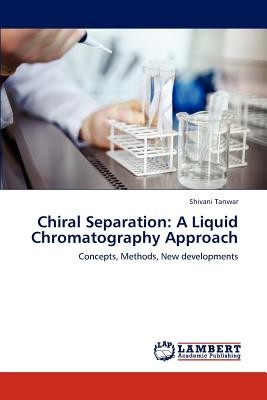
- We will send in 10–14 business days.
- Author: Shivani Tanwar
- Publisher: LAP Lambert Academic Publishing
- ISBN-10: 3659102938
- ISBN-13: 9783659102936
- Format: 15.2 x 22.9 x 1.1 cm, minkšti viršeliai
- Language: English
- SAVE -10% with code: EXTRA
Reviews
Description
Biological in vivo processes are stereochemically controlled and rate limited by proper selection of enantiomers. Wrong selection can have deleterious effects, therefore, more than 40% of drugs (over the retail counters and prescribed) are indeed chiral, and of these 25% are supplied as pure enantiomers. So chiral separation has remained interesting and still challenging task for oneself to develop the new, simple, reproducible and sensitive methods. This book focuses on the chiral separation of some important pharmaceuticals using two major approaches; one is pre-column derivatization with a chiral reagent followed by separation of resulting diastereomers known as 'indirect approach'. The other one is 'direct approach' which may use a chiral mobile phase additive (CMPA) or a chiral stationary phase (CSP) or the chiral selector is immobilized/ impregnated with the stationary phase.
EXTRA 10 % discount with code: EXTRA
The promotion ends in 23d.11:55:46
The discount code is valid when purchasing from 10 €. Discounts do not stack.
- Author: Shivani Tanwar
- Publisher: LAP Lambert Academic Publishing
- ISBN-10: 3659102938
- ISBN-13: 9783659102936
- Format: 15.2 x 22.9 x 1.1 cm, minkšti viršeliai
- Language: English English
Biological in vivo processes are stereochemically controlled and rate limited by proper selection of enantiomers. Wrong selection can have deleterious effects, therefore, more than 40% of drugs (over the retail counters and prescribed) are indeed chiral, and of these 25% are supplied as pure enantiomers. So chiral separation has remained interesting and still challenging task for oneself to develop the new, simple, reproducible and sensitive methods. This book focuses on the chiral separation of some important pharmaceuticals using two major approaches; one is pre-column derivatization with a chiral reagent followed by separation of resulting diastereomers known as 'indirect approach'. The other one is 'direct approach' which may use a chiral mobile phase additive (CMPA) or a chiral stationary phase (CSP) or the chiral selector is immobilized/ impregnated with the stationary phase.


Reviews